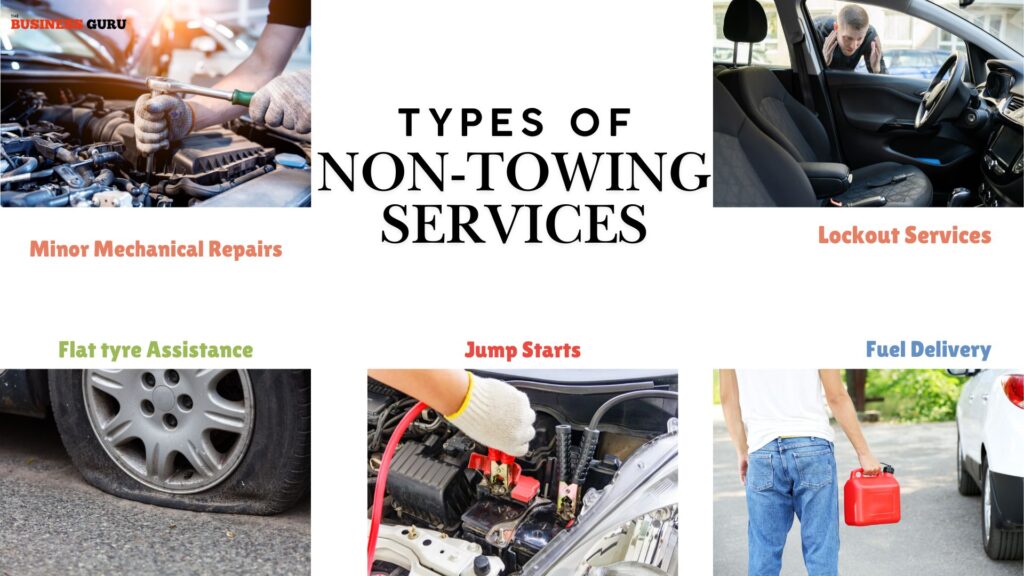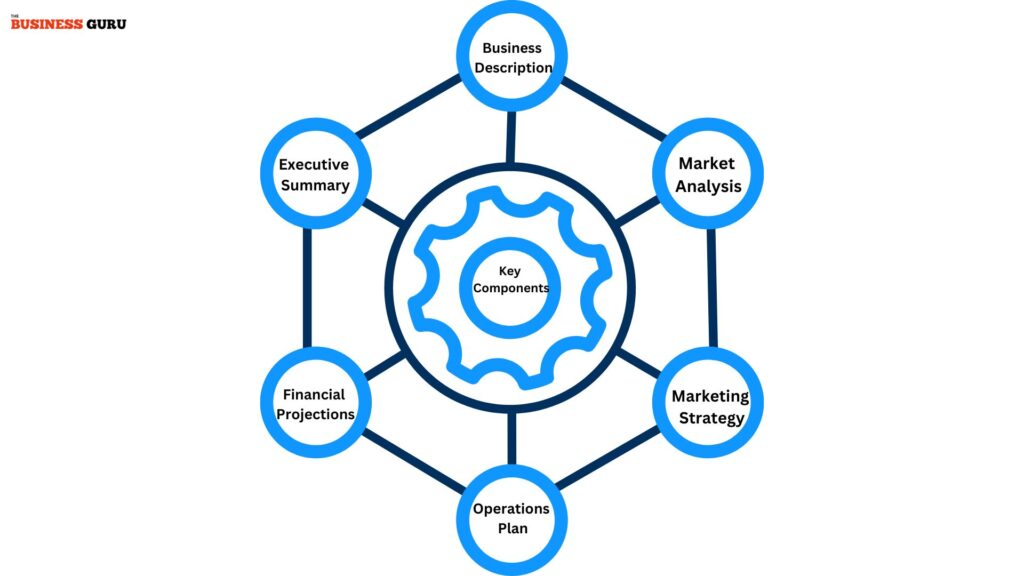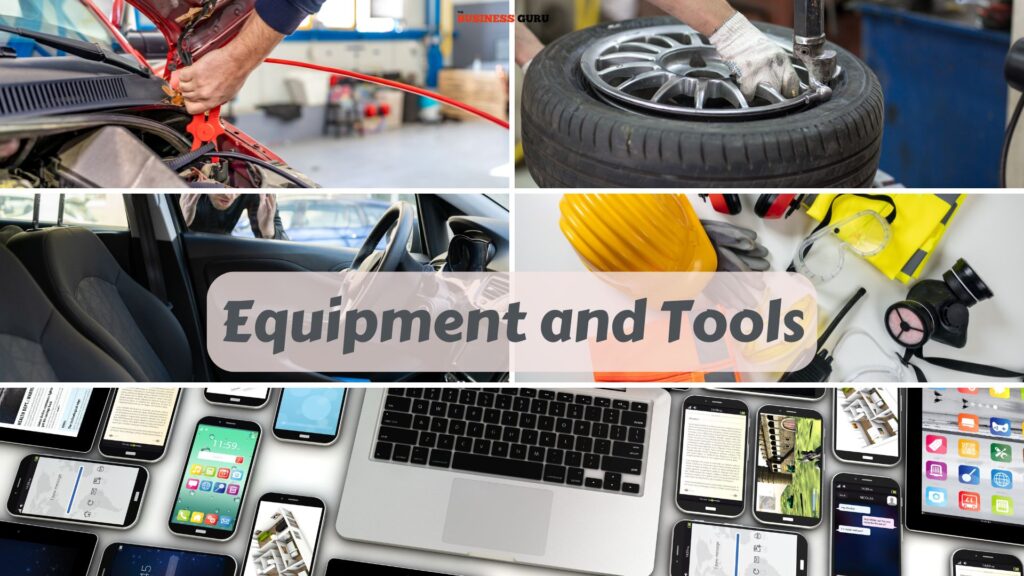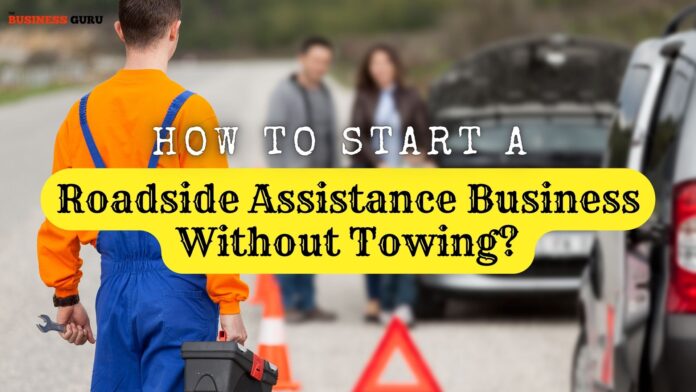In an increasingly mobile society, the demand for roadside assistance services continues to grow. While many people associate roadside assistance with towing services, a significant market for non-towing roadside assistance can support various scenarios—flat tyres, dead batteries, locked vehicles, and more. Starting a roadside assistance business without towing can be profitable and fulfilling for aspiring entrepreneurs.
This time, we will explore the steps required to start your own roadside assistance business, focusing on non-towing services. We will outline essential business planning, operational strategies, marketing tactics, and more to help you navigate this emerging industry successfully.
Understanding the Roadside Assistance Industry
What Is Roadside Assistance?
Roadside assistance refers to motorists experiencing vehicle problems on the road. While towing services are a significant component of roadside assistance offerings, many others provide valuable support without physically moving the vehicle.
Types of Non-Towing Services

Non-towing roadside assistance services often include:
• Flat tyre Assistance: Changing a flat tyre using the customer’s spare.
• Jump Starts: Assisting vehicles with dead batteries.
• Lockout Services: Helping customers gain entry into their vehicles when locked out.
• Fuel Delivery: Delivering fuel to customers who run out of gas.
• Minor Mechanical Repairs: Addressing minor issues that can be resolved on-site, such as replacing fuses or adjusting tyres.
Industry Growth and Demand
The roadside assistance industry has experienced significant growth due to several factors:
• Increased Vehicle Ownership: As more people own vehicles, the likelihood of roadside emergencies increases.
•Long-Distance Travel: Frequent road trips and longer commutes contribute to the demand for roadside assistance.
• Membership Programs: Many auto clubs and insurance companies now offer roadside assistance as part of their packages, increasing customer awareness and necessity.
Competitors and Market Landscape
When considering starting a roadside assistance business, analysing competitors in your local market is crucial. Key points of research include:
• Existing Services Offered: Identify what services competitors provide and at what price point.
• Target Audience: Analyze the clientele gathering services, such as families, travellers, or commercial vehicles.
• Strengths and Weaknesses: Explore what competitors do well and where there may be gaps in the market you can fill.
Creating a Business Plan
Importance of a Business Plan
Creating a well-structured business plan serves as a roadmap for your roadside assistance business. It will clarify your vision, outline your strategies, and help secure funding if needed.
Key Components of a Business Plan

When drafting your business plan, consider including the following sections:
1. Executive Summary: A brief overview of your business concept, mission statement, and key objectives.
2. Business Description: Detailed information about your roadside assistance services, target market, and unique selling propositions (USPs).
3. Market Analysis: Summarize your research findings on market demands, competitors, and customer demographics.
4. Marketing Strategy: Your plan for attracting customers, including advertising, pricing, and promotional strategies.
5. Operations Plan: Describe how you will run your business, including services provided, customer service strategies, and logistics.
6. Financial Projections: Estimated startup costs, revenue forecasts, and break-even analysis to assess financial viability.
Legal Considerations
Choosing a Business Structure
Select an appropriate legal structure for your roadside assistance business. Common structures include:
• Sole Proprietorship: The simplest structure, easy to set up and manage, but offers no personal liability protection.
• Limited Liability Company (LLC): A popular choice for small businesses, providing personal liability protection while allowing pass-through taxation.
• Corporation: More complex, with stricter regulations and tax obligations. Suitable for larger operations with multiple shareholders.
Registering Your Business
Once you choose a business structure, complete the necessary registrations:
• Register Your Business Name: Select and register a unique name for your business that complies with local regulations.
• Obtain Required Licenses and Permits: Check your local and state requirements for any necessary business licenses, permits, or certifications.
• Get an Employer Identification Number (EIN): If you choose to form an LLC or corporation, apply for an EIN through the IRS for tax purposes.
Insurance Considerations
Securing the right insurance coverage is essential for protecting your business and mitigating risk:
• General Liability Insurance: Protects against bodily injury and property damage claims.
• Professional Liability Insurance: Protects against claims of negligence or failure to deliver services.
• Commercial Auto Insurance: This coverage is necessary if you operate a vehicle to provide services.
Setting Up Your Roadside Assistance Business
Equipment and Tools

You’ll need specific equipment and tools to provide roadside assistance services effectively. Essential items include:
• Jump Starter Kit: A portable jump starter to help customers with dead batteries.
• Tyre-changing equipment: Include a jack, lug wrench, and tyre inflator to assist with flat tyres.
• Lockout Tools: Tools for assisting customers who have locked themselves out of their vehicles (e.g. lockout wands).
• Roadside Safety Gear: Safety cones, reflective vests, and flashlights for visibility and safety during service calls.
• Communication Devices: A reliable smartphone and two-way radio to coordinate with clients.
Operational Approaches
Decide how you will deliver your roadside assistance services. Key operational approaches could include:
• Mobile Unit: Operate a mobile unit to respond to roadside emergencies directly and efficiently.
• Online Booking System: Implement an online scheduling system or app to allow customers to book services easily and track responders.
• Centralized Call Center: If you plan to scale your operations in the future, develop a central call handling system.
Pricing Your Services
Competitive Pricing Strategies
Setting the right prices for your roadside assistance services is crucial for attracting customers while ensuring profitability. Here are some pricing strategies to consider:
• Flat Rates: Flat rates for common services such as jump-starts, tyre changes, and lockout assistance.
• Membership Plans: Create subscription-based plans offering discounted rates or unlimited services for a monthly fee.
• Bundle Services: Consider bundling services, such as offering discounts for customers who request multiple services.
Researching Competitor Pricing
Evaluate competitors’ pricing structures to develop a competitive yet profitable pricing strategy. Understanding local market rates can help you position your services effectively.
Effective Marketing Strategies
Creating an Online Presence
In today’s digital age, establishing an online presence is essential for attracting customers. Key components to consider include:
• Website: Create a professional website that showcases your services, pricing, and contact information. Make sure it’s mobile-friendly so potential customers can access it from their phones.
• SEO Optimization: Implement search engine optimization (SEO) best practices to improve your website’s rankings and visibility in local searches.
• Social Media: Use platforms like Facebook, Instagram, and Twitter to promote your services and engage with your community.
Local Advertising
Consider utilizing local advertising strategies to reach potential customers:
• Business Cards: Distribute business cards at local events, service stations, or convenience stores.
• Networking: Attend local business expos and community events to connect with potential clients and partners.
• Local Listings: Create profiles on Google My Business, Yelp, and other local business directories to increase visibility.
Promotions and Incentives
Attract customers through promotional offers and incentives:
• First-Time Discounts: Offer discounts to first-time customers or special referral rates.
• Seasonal Promotions: Consider running seasonal campaigns to draw attention during holidays or peak travel seasons.
Managing Your Roadside Assistance Business
Customer Service Excellence
Ensuring exceptional customer service will set you apart from the competition:
• Open Communication: Communicate clearly with customers throughout the service process and provide updates on estimated arrival times.
• Feedback and Reviews: Encourage customers to leave feedback or reviews that you can showcase to attract new clients.
Tracking and Analyzing Performance
Regularly monitor your business performance to gain insights into areas for improvement:
• Data Collection: Use tools and software to collect data on service requests, customer satisfaction, and revenue.
• Adjust Strategies: Use collected data to evaluate your marketing efforts, pricing models, and customer service practices, making adjustments as needed.
Expanding Your Services
As your business grows, consider expanding service offerings to meet increasing demand:
• Partnerships: Develop partnerships with local businesses, such as auto repair shops, to provide complementary services.
• Diversification: To enhance revenue potential, consider offering additional services like vehicle inspections or maintenance checks.
Navigating Challenges
Handling Competition
The roadside assistance sector can be competitive. To stand out, consider the following strategies:
• Unique Value Proposition (UVP): Identify what differentiates your services from competitors and promote that unique angle.
• Exceptional Services: Focus on providing outstanding service quality and responsiveness.
Economic Variables
External economic factors can inevitably impact your business. Prepare by:
• Monitoring Trends: Stay informed about changes in the automotive or transportation industry that may influence demand.
• Flexibility: Be prepared to adapt your services and pricing to accommodate changing market conditions.
Legal and Regulatory Challenges
Ensure compliance with all local regulations and laws to avoid potential legal issues. Consult with legal experts to clarify the requirements for operating a roadside assistance business.
Conclusion
Starting a roadside assistance business without towing can be a rewarding and profitable venture for eager entrepreneurs. You can build a successful company by understanding your target market’s needs, creating a solid business foundation, and delivering exceptional customer service.
With the right planning, marketing strategies, and operational processes, you’ll be ready to fill a critical gap in the roadside assistance industry. Embrace the journey and focus on meeting customer needs—your business will flourish.
FAQs
u003cstrongu003eDo I need a special license to operate a roadside assistance business?u003c/strongu003e
License requirements vary by state, but you may need a business license and possibly a separate operational permit. Check local regulations for specifics.
u003cstrongu003eWhat services can I offer without towing?u003c/strongu003e
You can provide jump starts, flat tyre changes, lockout assistance, fuel delivery, and minor mechanical repairs.
u003cstrongu003eHow much can I charge for roadside assistance services?u003c/strongu003e
Pricing varies by location and service type. Common rates range from $50 to $150 depending on the service provided.
u003cstrongu003eHow do I find clients for my roadside assistance business?u003c/strongu003e
Consider local advertising, building an online presence, networking within the community, and establishing partnerships with related businesses.
u003cstrongu003eShould I offer membership plans?u003c/strongu003e
Membership plans can be an attractive option. They offer customers discounts in exchange for a monthly fee, which encourages recurring business.
u003cstrongu003eWhat equipment do I need to start my business?u003c/strongu003e
Basic equipment includes jump starters, tire-changing tools, lockout kits, safety gear, and communication devices.
u003cstrongu003eCan I operate my roadside assistance business from home?u003c/strongu003e
Yes, many roadside assistance business owners start from home to minimize overhead costs, especially if you are providing mobile services.
u003cstrongu003eHow can I handle customer complaints?u003c/strongu003e
Address complaints promptly, listen to concerns, and offer solutions or compensation when appropriate. Maintaining strong communication is key to customer satisfaction.
u003cstrongu003eHow do I establish credibility for my roadside assistance business?u003c/strongu003e
Register your business, obtain necessary licenses, secure insurance, and gather client reviews to demonstrate professionalism and reliability.
u003cstrongu003eIs there a high demand for roadside assistance services?u003c/strongu003e
Yes, with increased vehicle ownership and more people travelling, the demand for roadside assistance services continues to grow, especially for non-towing services.


